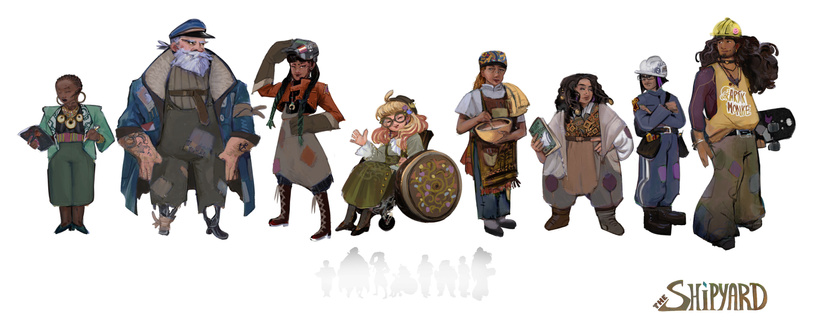Below you will find pages that utilize the taxonomy term “Blender”
Dev Log #3.9 - AO baking
The Baking show
In Game graphics, everything that can be baked, should be baked.
~ Captain Honora
Have you first heard of raytracing 5 years ago, or 20 years ago? That would dictate your view of the technology, and what you imagine the point of it is.
When I first heard of raytracing, it was around 2004 with the first versions of blender. Before cycles was around, there was two choices of AO; approximate, or raytraced brute force. We’d spend hours , then later in the 2010’s minutes to calculate a single AO pass
Dev Log #3.8 - Lowpoly
🎵It’s too late, topologize.🎶
Before any rigging can take place (or UV mapping for that matter), the high poly sculpt from Sam Proctor needs to be optimized.
I like to think of the lowpoly as a 3D papercraft version of the model, which in flattened view will act as the paper canvas on which we will print the texture, including the normal map.
For this we turned to the app Cozy Blanket, (always following the challenge to use the lowest possible energy requirement for the rig and cloud, here with a 5 watts power consumption on M1 ipad pro. No need to have a 40-100 watts laptop or 250 watt desktop running just a simple retopo task.
Dev Log #2.6 - Art updates
We’ve been busy on the art side of things too. @khaleer_art joined us to help with modelling and texturing. We’ve got a first mock-up image showing what the ship could look like in-game.
Meanwhile, majikarpette proposed a tweak to the color lineup, and also finished a BW concept art of the traveling shopkeeper.

An early greyscale concept art of the traveling shopkeeper, who will exchange rare items and ship components to the player in exchange for a steep price. Finishing her quest expeition leads to more reasonable prices.
Dev Log #2.5 - Ship-building UI and resource flows
Building a ship requires parts and components, which you make with metal plates, composites, and recycled ingots. Various buildings produce these materials and refine them into ship parts.
Some of these buildings consume electricity (🪫), which at first is easy to procure, but as the game progresses and storms keep knocking down the grid, you find yourself having to improvise a DIY micro grid (⚡️) for the shipyard to keep going.